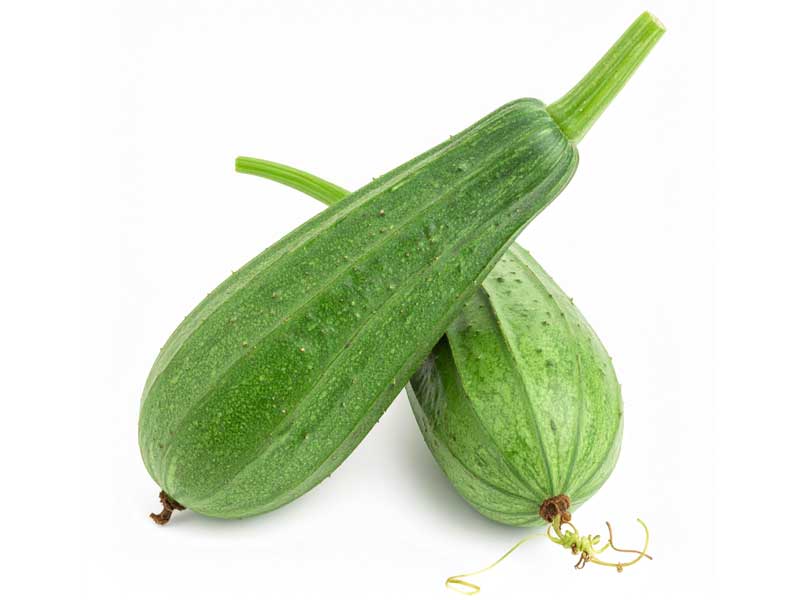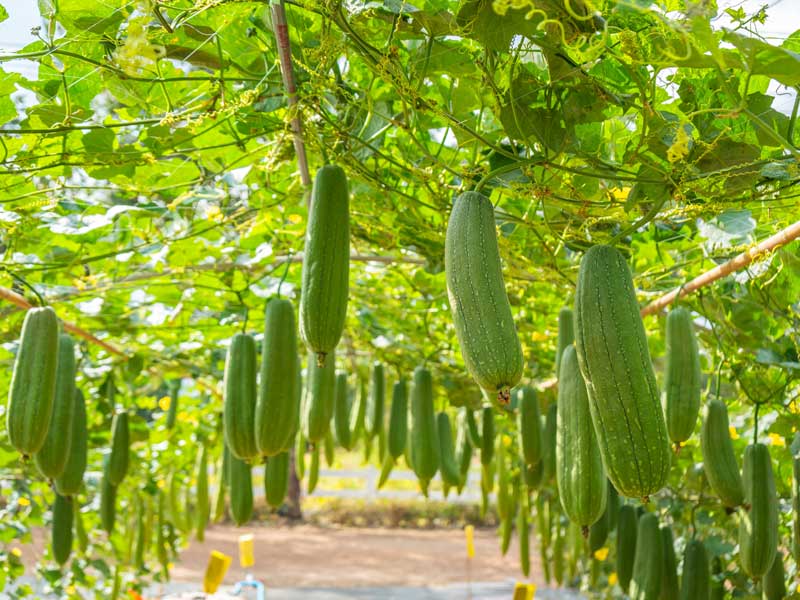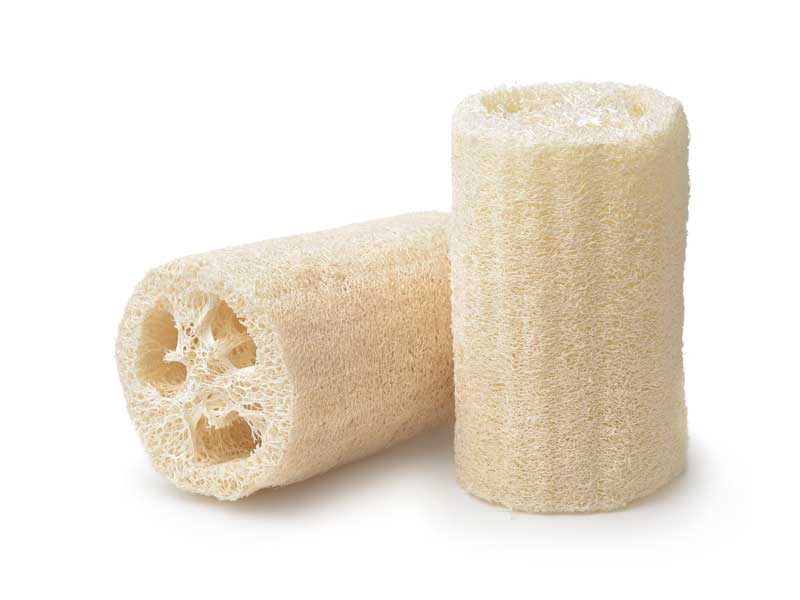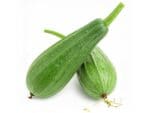LUFFA ‘Angled Sponge Gourd’ Vegetable Seeds
Botanical Name: Luffa aegyptiaca
Other names: Smooth luffa, Egyptian cucumber, loofah, vegetable sponge
- Use as a natural, plastic-free sponge.
- Produces long, ridged fruits (30–45 cm) that are tender and edible when young.
- Fully mature fruits can be dried to create biodegradable bath and kitchen sponges.
- Fast-growing climbing vine reaching 3–5 metres with strong vertical support.
- Popular in many Asian cuisines—ideal for curries, stir-fries, and soups.
- Thrives in hot, humid climates with long growing seasons.
- Performs best in fertile, well-drained soil with consistent warmth and moisture.
Plant Details
- Plant Type: Annual climber in temperate zones; short-lived perennial in tropical climates
- Plant Height: Vines can reach 3–5 m or more with adequate support
Sowing Information
- Germination: 7–14 days (optimal soil temperature: 25–30°C)
- Depth: 2–3 cm deep
- Position: Full sun
- Sow Where: Direct into garden beds or large containers; thin to strongest seedlings
- Soil Type: Rich, well-drained soil with plenty of compost; pH 6.0–7.5
- Spacing: 60–90 cm between plants, rows 100–150 cm apart
Growing Tips
- Soak seeds in warm water overnight before sowing to speed up germination.
- Install a strong trellis, arch, or netting early to support heavy vines.
- Keep soil consistently moist and mulch around the base to retain water.
- Feed with a balanced organic fertiliser every 2–3 weeks to support flowering and fruiting.
- Harvest young fruits (15–20 cm) for cooking. Pick frequently to encourage ongoing fruit set.
- Leave fruits on the vine for 120+ days to mature fully into fibrous, sponge-like interiors.
Harvest
60–75 days after sowing for eating; allow 120+ days for drying and sponge production. Mature fruits will dry on the vine and turn brown before harvesting for loofahs.
When to Sow Angled Sponge Gourd in Your Climate
| Climate Zone | Best Planting Time | Tips |
|---|---|---|
| Temperate | September–December | Sow after frost has passed; ensure warm soil for good germination. |
| Subtropical | August–March | Water regularly in dry weather and provide strong vertical support. |
| Tropical | Year-round | Best planted during the dry season to avoid fungal disease from excess rain. |
| Cool | October–December | Wait until late spring when soils have fully warmed; use cloches to extend season. |
| Arid | August–March | Mulch well and irrigate consistently; best planted in mild weather. |
Companion Planting
Angled Sponge Gourd thrives when planted alongside companion plants that enhance growth, naturally deter pests, and support overall garden health. Strategic companion planting creates a balanced ecosystem, promoting vigorous vines and abundant, high-quality fruit.
- Basil: Aromatic herb that repels aphids, whiteflies, and spider mites. Basil attracts beneficial insects, improves pollination, and supports strong, healthy gourd vines throughout the growing season.
- Beans: Nitrogen-fixing legumes enrich the soil, providing essential nutrients for sponge gourd growth. Beans also act as natural supports for climbing vines in mixed plantings.
- Additional Companions: Corn, nasturtium, marigold, and cucumbers help reduce pest pressure, attract pollinators, and enhance soil fertility when planted near Angled Sponge Gourd.
Planting basil and beans together with Angled Sponge Gourd creates a productive, low-maintenance system. This combination improves soil structure, reduces pest damage, and encourages steady, healthy development throughout the season, resulting in vibrant, tender gourds and a reliable harvest.








